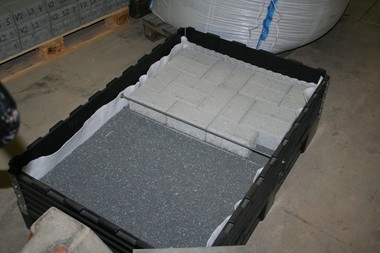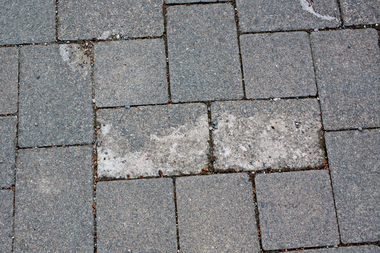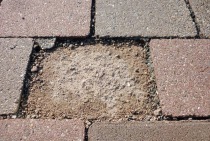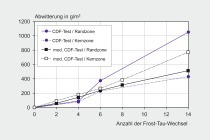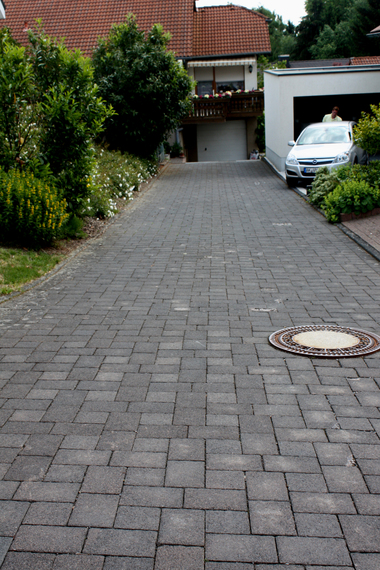New research findings
The freeze-thaw resistance of concrete paving blocks must be verified by the slab test (DIN EN 1338). Sometimes clients in Germany demand the CDF method (DIN CEN/TS 12390-9). Independent of the test method used there are some discrepancies between the laboratory test results and the real-life behavior of paving blocks installed. It is, for example, reported that there were some cases in which the facing layer of installed concrete paving blocks detached from the core concrete after only a few winter seasons despite the fact that these products had previously passed the CDF tests. Within the IGF research project No. 17996 N, VDZ and University of Kassel investigated how a purposeful forecast of the scaling behavior of areas paved with concrete blocks is possible by the above-mentioned test methods.
It is common practice to test only the face concrete of double-layer concrete paving blocks. This can lead to an incorrect evaluation of the freeze-thaw resistance of concrete paving blocks. A highly water-saturated core concrete with a low freeze-thaw-resistance can contribute to spalling of the face concrete after installation. Concrete paving blocks installed on a base layer of gravel were investigated in the research project under practice-oriented installation and environmental conditions in a freeze chamber. The consistence of the results obtained by the slab test of the face and core concrete with the damage behavior observed in the freeze chamber was higher than that achieved by the CDF method.
In addition to testing the face concrete, it is highly recommended to test the freeze-thaw resistance of the core concrete by means of the slab test. Robust concrete compositions with an appropriate cement content should be used for the core concrete, too. The risk of failure of installed concrete paving blocks is diminished in this way. Possibly DIN EN 1338 will stipulate the core concrete test by means of the slab test. Until then, contracting authorities could require such verification.





